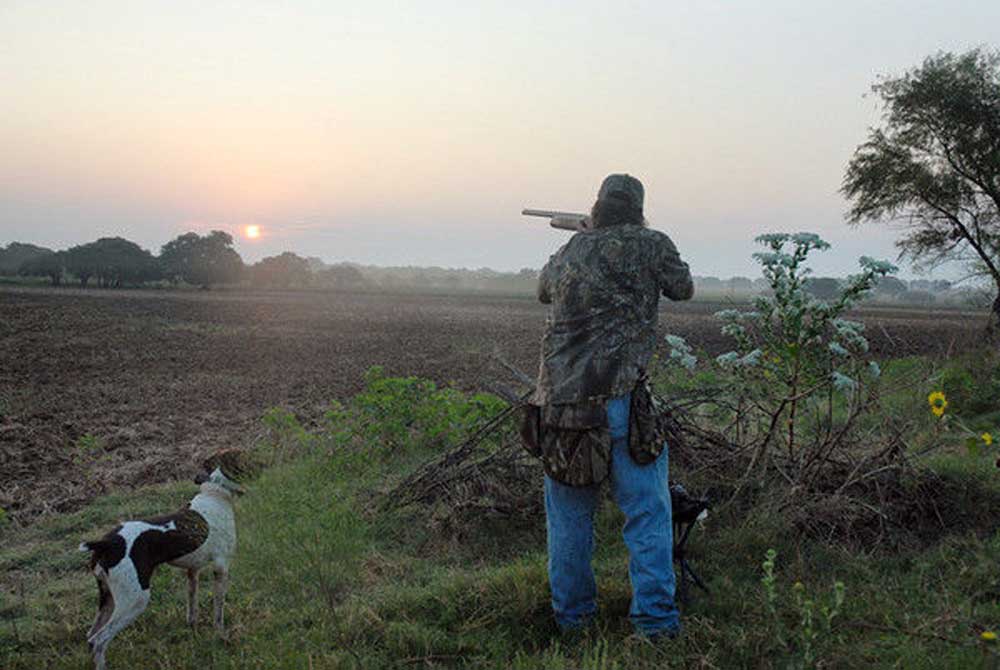Fed Survey Appears To Be Setting Up Change To Non-Toxic Shot
Published 11:00 pm Wednesday, July 3, 2013

- Steve Knight/Staff A new day could be dawning for dove hunters as survey puts emphasis on switching from lead to non-toxic shot for dove hunters.
It was about a year ago that the U.S. Fish and Wildlife Service started to mail out of a survey to dove hunters.
Something happened on the way to the post office and the National Mourning Dove Hunter Attitude Survey on Non-toxic Shot never was mailed.
A year and four words less in the title, the National Mourning Dove Hunter Survey has finally gotten the stamp of approval and on its way to hunters nationwide. Don’t expect one in your mailbox, however. In most cases the Service only sent 800 per state, and with an estimated 250,000 dove hunters in Texas you have much better odds of getting an opening day limit.
Shaun Oldenburger, the Texas Parks and Wildlife Department’s dove program leader, described the survey as a human dimension survey that goes a step farther than the Hunter Information Program.
“If you look at what they pull from HIP it is not that much. I guess they can get some of that with their license, but they want to key in on the demographics on how you answer the question. Younger hunters may answer them differently,” Oldenburger said.
So what they have is a 42 question survey asking the mundane, where did you grow up, how old are you, your race, your sex, education and occupation.
The survey also asks how many doves you normally take in a season, how much do you spend on ammo, how important is dove hunting to you, how often do you hunt and what other birds do you hunt.
But while the name was changed to exclude non-toxic shot, the bulk of the survey is about hunters’ use of lead shot, their attitude about lead vs. non-toxic shot and leads impact on the environment.
Biologists don’t know the answers. How could hunters?
Texas had a good chance to study the impact of spent lead in 2008, but opted to go with a lethality study in which hunters used both non-toxic and lead to see which was more effective. While that study still hasn’t been released (the latest due date is this winter), no one doubts the results are that either will work.
What we don’t know is what happens to the lead a day after the hunt or a week or year. It is believed dove numbers are down nationally, but is it because of lead shot, environmental factors or flawed survey techniques?
Biologists attempted to determine that with waterfowl in the 1980s. Those studies reportedly showed ducks were picking up spent lead from the water and using it as grit, causing lead poisoning that killed the birds.
As an aside, one Texas biologist involved in the research said the books were to some degree cooked, and that while biologists found sick ducks with a few pellets, they also found healthy ones loaded with lead. Those results were reportedly left out.
Still, the information led to a federal mandate requiring non-toxic shot beginning in 1991.
Oldenburger said that at present TPWD isn’t leaning one way or another. However, having attended flyway meetings he has heard some groups pushing for a ban on lead for various reasons.
A person who was not trusting might say this survey is a taxpayer-funded research to develop a public relations campaign to push non-toxic shot through. What other reason would the Service have to collect demographic information after all these years, especially when the non-toxic/lead questions are included?
The truth is hunters put more than a million pounds of shot in the air each fall. There is a move to eliminate that, and they will. It is just a question of when.
Have a comment or opinion on this story? Contact outdoor writer Steve Knight by email at outdoor@tylerpaper.com. Follow Steve Knight on Facebook at TylerPaper Outdoors and on Twitter @tyleroutdoor.







